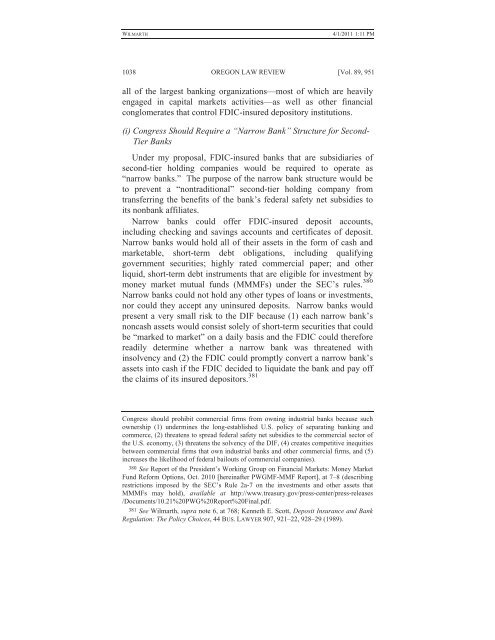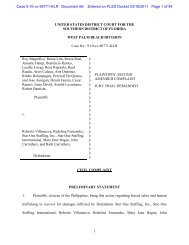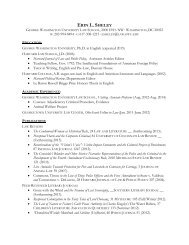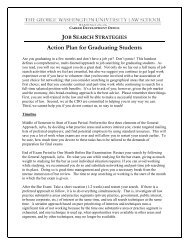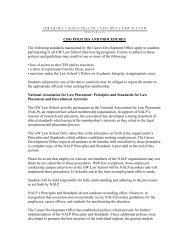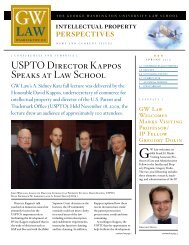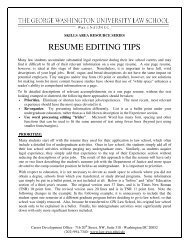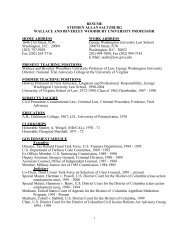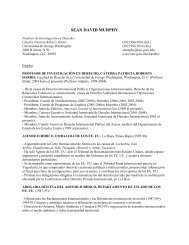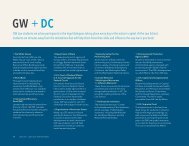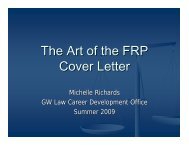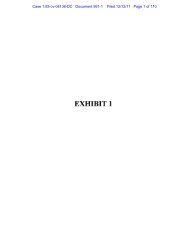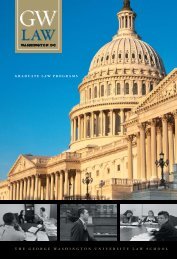CLE Materials for Panel #1 - George Washington University Law ...
CLE Materials for Panel #1 - George Washington University Law ...
CLE Materials for Panel #1 - George Washington University Law ...
Create successful ePaper yourself
Turn your PDF publications into a flip-book with our unique Google optimized e-Paper software.
WILMARTH<br />
4/1/2011 1:11 PM<br />
1038 OREGON LAW REVIEW [Vol. 89, 951<br />
all of the largest banking organizations—most of which are heavily<br />
engaged in capital markets activities—as well as other financial<br />
conglomerates that control FDIC-insured depository institutions.<br />
(i) Congress Should Require a “Narrow Bank” Structure <strong>for</strong> Second-<br />
Tier Banks<br />
Under my proposal, FDIC-insured banks that are subsidiaries of<br />
second-tier holding companies would be required to operate as<br />
“narrow banks.” The purpose of the narrow bank structure would be<br />
to prevent a “nontraditional” second-tier holding company from<br />
transferring the benefits of the bank’s federal safety net subsidies to<br />
its nonbank affiliates.<br />
Narrow banks could offer FDIC-insured deposit accounts,<br />
including checking and savings accounts and certificates of deposit.<br />
Narrow banks would hold all of their assets in the <strong>for</strong>m of cash and<br />
marketable, short-term debt obligations, including qualifying<br />
government securities; highly rated commercial paper; and other<br />
liquid, short-term debt instruments that are eligible <strong>for</strong> investment by<br />
money market mutual funds (MMMFs) under the SEC’s rules. 380<br />
Narrow banks could not hold any other types of loans or investments,<br />
nor could they accept any uninsured deposits. Narrow banks would<br />
present a very small risk to the DIF because (1) each narrow bank’s<br />
noncash assets would consist solely of short-term securities that could<br />
be “marked to market” on a daily basis and the FDIC could there<strong>for</strong>e<br />
readily determine whether a narrow bank was threatened with<br />
insolvency and (2) the FDIC could promptly convert a narrow bank’s<br />
assets into cash if the FDIC decided to liquidate the bank and pay off<br />
the claims of its insured depositors. 381<br />
Congress should prohibit commercial firms from owning industrial banks because such<br />
ownership (1) undermines the long-established U.S. policy of separating banking and<br />
commerce, (2) threatens to spread federal safety net subsidies to the commercial sector of<br />
the U.S. economy, (3) threatens the solvency of the DIF, (4) creates competitive inequities<br />
between commercial firms that own industrial banks and other commercial firms, and (5)<br />
increases the likelihood of federal bailouts of commercial companies).<br />
380 See Report of the President’s Working Group on Financial Markets: Money Market<br />
Fund Re<strong>for</strong>m Options, Oct. 2010 [hereinafter PWGMF-MMF Report], at 7–8 (describing<br />
restrictions imposed by the SEC’s Rule 2a-7 on the investments and other assets that<br />
MMMFs may hold), available at http://www.treasury.gov/press-center/press-releases<br />
/Documents/10.21%20PWG%20Report%20Final.pdf.<br />
381 See Wilmarth, supra note 6, at 768; Kenneth E. Scott, Deposit Insurance and Bank<br />
Regulation: The Policy Choices, 44 BUS.LAWYER 907, 921–22, 928–29 (1989).


